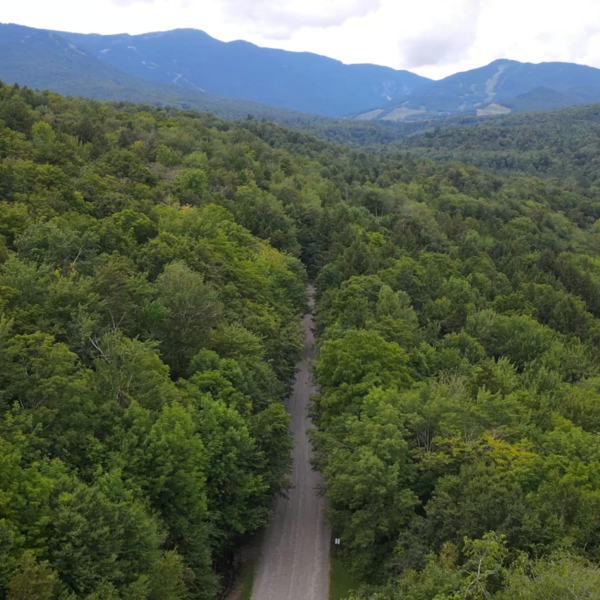Published by the Stowe Reporter, August 15, 2024. Original link here.
A campaign to permanently protect an 85-acre parcel of land off Mountain Road in Stowe is underway. The ‘Adams Camp Connector’ represents an opportunity many have dreamed of for decades — an uninterrupted trail network on permanently protected land that reaches from Mt. Mansfield to Stowe village.
"This is one of those rare opportunities to conserve a piece of land that reflects diverse community values,” Tom Rogers, executive director of Stowe Land Trust, said. “The Adams Camp Connector benefits outdoor recreation, wildlife habitat, working forestland, and the overall ecology of the landscape. It’s the epitome of great conservation and we’re anticipating widespread community support as we look to raise the funds for this effort within the very short window we have to get this project across the finish line.”
In addition to Stowe Land Trust, the effort to protect the Adams Camp Connector has broad support from conservation, recreation, and local government organizations including Stowe Trails Partnership, Catamount Trail Association, Stowe Nordic, the Lamoille County Planning Commission, and the Stowe Selectboard and Conservation Commission.
Protected trail network
Hikers, bikers, and skiers are particularly excited about a proposed multi-use trail that will connect Adams Camp to the Stowe Rec Path on protected land.
“Trail connectivity is among our highest priorities,” Carolyn Lawrence, executive director of Stowe Trails Partnership, said. “Stowe has three excellent trail networks — Cady Hill, Adams Camp, and Sterling Forest — and a lot of demand from the public to establish better connections between them. This represents a once-in-a-lifetime opportunity.”
According to Stowe Trails Partnership, Stowe experienced a 37 percent increase in trail use between 2019 and 2021, and usage continues to grow. In 2023, there were 106,000 trail uses across the three networks.
“The more we can ease parking and trail congestion by making it easier to access trails from town without getting into a car, the better,” Lawrence said.
While many of Stowe’s trail systems are already on conserved land, there are trails currently located on private property — including parts of the popular Haulapalooza Trail — that Lawrence worries could be impacted by development. Conservation of the Adams Camp Connector parcel would protect those trails and would potentially relocate part of the Catamount Trail onto permanently protected land.
Preserving wildlife habitat, intact forestland
Recreators, however, are not the only beneficiaries. A recent University of Vermont study confirmed that fox, deer, fisher, raccoon, coyote and other wildlife regularly move through the area along the Little River.
“Wildlife and people are increasingly coming into conflict in Stowe,” Rogers said. “It is critical that we continue to protect areas of high-value habitat such as this to keep wildlife in the wild. Protecting this forest will allow bears and other wild animals to find food and shelter in the woods rather than in people’s back yards.”
Identified as a “highest priority area” by the Vermont Agency of Natural Resources, the parcel is one piece of a large, intact forest block considered critical to protecting forested habitat, healthy aquatic and riparian systems, and a diverse ecosystem on which plant and animal communities depend.
Successful conservation of the Adams Camp Connector would add the parcel to a growing map of interconnected areas that uphold the ecological integrity of Vermont and protect its natural legacy.
The property will remain a working forest, continuing to provide a place for the Percy Farm to tap trees for its maple sugaring operation, as well as the option for sustainably harvested, local wood products to be produced on a limited portion of the property in the future.
An opportunity with a deadline
Stowe Land Trust is responsible for securing $820,000 for the Adams Camp Connector project and stewardship endowment costs and they need to have the funding in place by Dec. 1.
Development of the property, which is not well-suited to the compact housing vision being championed by the town, would close the window of opportunity. Under a settlement reached earlier this year, Stowe Land Trust has until the end of the year to purchase the conservation easement.
Meeting that deadline, says Rogers, will be a lift. “Typically, a campaign of this size takes a longer time to meet its financial goals. We don’t have the luxury of time, so we’re looking to build excitement and community support for this project right out of the gate.”
